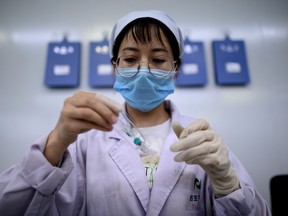It is tragedy in Canada and anywhere on the planet that anyone should die of this vaccine-preventable disease in this day and age.

The reason we don’t see rabies anymore is the introduction of the rabies vaccine and rabies immunoglobulin. Prompt action before symptoms start can save a life, which makes this child’s recent death such a tragedy.
Most rabies is transmitted by infected saliva during an animal bite. Not every bite results in infection. A bite through clothing is lower risk than a bite directly into the skin, and a bite to the head and neck is higher risk than a bite on an extremity.
Bats pose a unique problem because their bites may be too small to be noticed at the time or may occur during sleep. Someone waking up to discover that a bat was in their room may not know if they were bitten, and unattended children may not be able to definitively exclude the possibility either. If the bat or animal in question is available for testing, that can settle the issue quickly because only about 10 to 15 per cent of bats tested have rabies. But if not, then post-exposure prophylaxis should be started.
Louis Pasteur developed the first rabies vaccine in 1885, and its use since has contributed to the widespread decline of the disease in both animals and humans in North America. Though dogs are routinely vaccinated, humans are not unless they are at high risk. Laboratory workers who work with the rabies virus, people who study bats or regularly enter high-density bat caves are eligible for what we call pre-exposure prophylaxis because they are so high risk.
Low-risk population can often just have post-exposure prophylaxis if they are exposed. Because rabies has a long incubation period that lasts months, you can vaccinate someone before symptoms develop and stave off the infection. Once symptoms develop, though, it is too late.
There is no treatment for rabies, and once the symptoms start, death is almost certain. The only hope is to act early during the incubation period. Proper wound care is important. After that, post-exposure prophylaxis can be achieved with the rabies vaccine and the administration of rabies immune globulin. The vaccine stimulates the immune system to start producing rabies-neutralizing antibodies after about seven to 10 days and generally lasts for years. But for high-risk patients who need immediate protection, especially those who were not previously vaccinated, the infusion of rabies immunoglobulin will provide an immediate dose of neutralizing antibodies that will last several weeks. When administered properly, failure is rare and it is literally lifesaving.
It is a tragedy that a child should die of rabies in Canada. It is tragedy that anybody anywhere on the planet should die of rabies in this day and age. We have an effective vaccine to prevent the infection from taking hold. So if there is any doubt that you were bitten by a wild animal, seek medical attention. It may quite literally be a question of life or death.